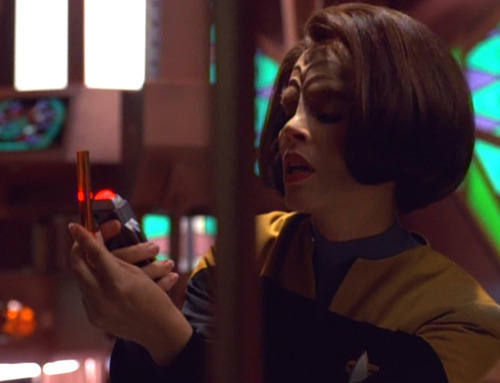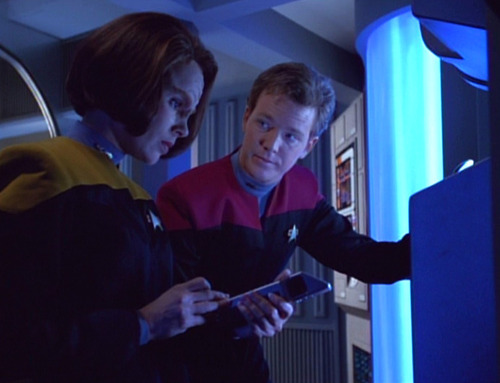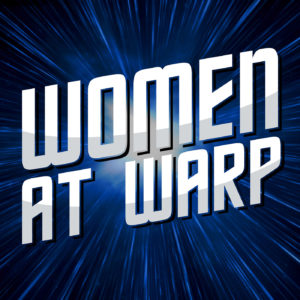“Dreadnought” is an episode that’s stuck in my memory from the first time I saw it, when it originally aired in 1996. I remembered vividly the tension as B’Elanna scrambles to disarm the Dreadnought missile down to the very last seconds before catastrophe.
Re-watching it now I have a deeper appreciation for how hard this episode must’ve been to pull off successfully. For anyone who hasn’t seen it or needs a refresher, “Dreadnought” begins with Voyager running into a debris field. Scans of the weapon signatures lead B’Elanna to realize the destruction was caused by a Cardassian missile that she had reprogrammed when she worked for the Maquis. Dreadnought is heading for an inhabited planetary system, and B’Elanna must beam on board the missile and try to repair it before it destroys its new target.
Meanwhile, Janeway has to warn the Rakosans’ leader, Kellan. And she must also decide what Voyager’s Plan B is, should B’Elanna fail.

So large chunks of the episode are basically B’Elanna talking to the Dreadnought computer, which she had reprogrammed with her own voice. The fact that it stays so compelling I think can be credited to the writer, Gary Holland; the director, LeVar Burton; and of course, Roxann Dawson.
It’s a fantastic B’Elanna episode. She’s the one who made Dreadnought what it is and she’s the only one who can stop it. She basically single-handedly saves two million Rakosans, as well as averting Voyager’s self-destruction and the deaths of Janeway and Tuvok. And she does it through engineering! And it’s exciting!
(Cue “She Blinded Me With Science”)
But the character is developed in other scenes as well. Early in the episode she gives a briefing to the senior staff where everyone’s listening to her.

Later, she has a conversation with Tom in Engineering where she confesses she feels guilty because Chakotay covered her ass, not telling everyone she’d altered Dreadnought without his orders. She still remembers how disappointed he was. Then, in a caring way, she calls Tom out on the way his work habits have been slipping. It’s a scene that’s laying groundwork for what’s to come in their relationship, but it also shows B’Elanna being much more secure about her role on the ship and trusting of her crewmates.

That’s reinforced at one point later on when she’s stressing to Kim, worried that she won’t be able to succeed because Dreadnought has spent so much time honing its programs. Kim reminds her Dreadnought is only as smart as she made it.
When B’Elanna argues with Dreadnought, on the other hand, she’s all about getting the job done. She pushes herself to the very limit of unconsciousness after Dreadnought turns off the ship’s air supply.

Basically, “Dreadnought” shows B’Elanna as a complex person. It makes no doubt of her intelligence, strength and skill. But it also shows her emotions without portraying them as a weakness or cause of her downfall. She feels legitimate feelings, like guilt at disappointing Chakotay and insecurity and fear about potentially failing her mission. But at no time are we led to think that makes her less capable at saving the day.
Unfortunately, not all women characters get written like that. Too often in pop culture, strength seems to be associated with masculinity and an emphasis on keeping emotions out of the picture. In her blog post on the common problems we see writing “strong women characters”, T.L. Bodine says:
“The stories get caught up in a false dichotomy: Either you can be strong like a man, or you’re stuck in outmoded gender roles.”
B’Elanna is far from the only woman character on Star Trek to break out of this dichotomy, but I think she’s one of the best examples because of the way her insecurities are presented alongside her Klingon temper, her clear physical strength and mad engineering skills.
Bechdel-Wallace Test: Pass – Janeway and Torres talk about Dreadnought. (Ensign Wildman and Kes also talk about baby names, but at this point they’re assuming the baby is a boy, so that scene would likely not pass the test.)











